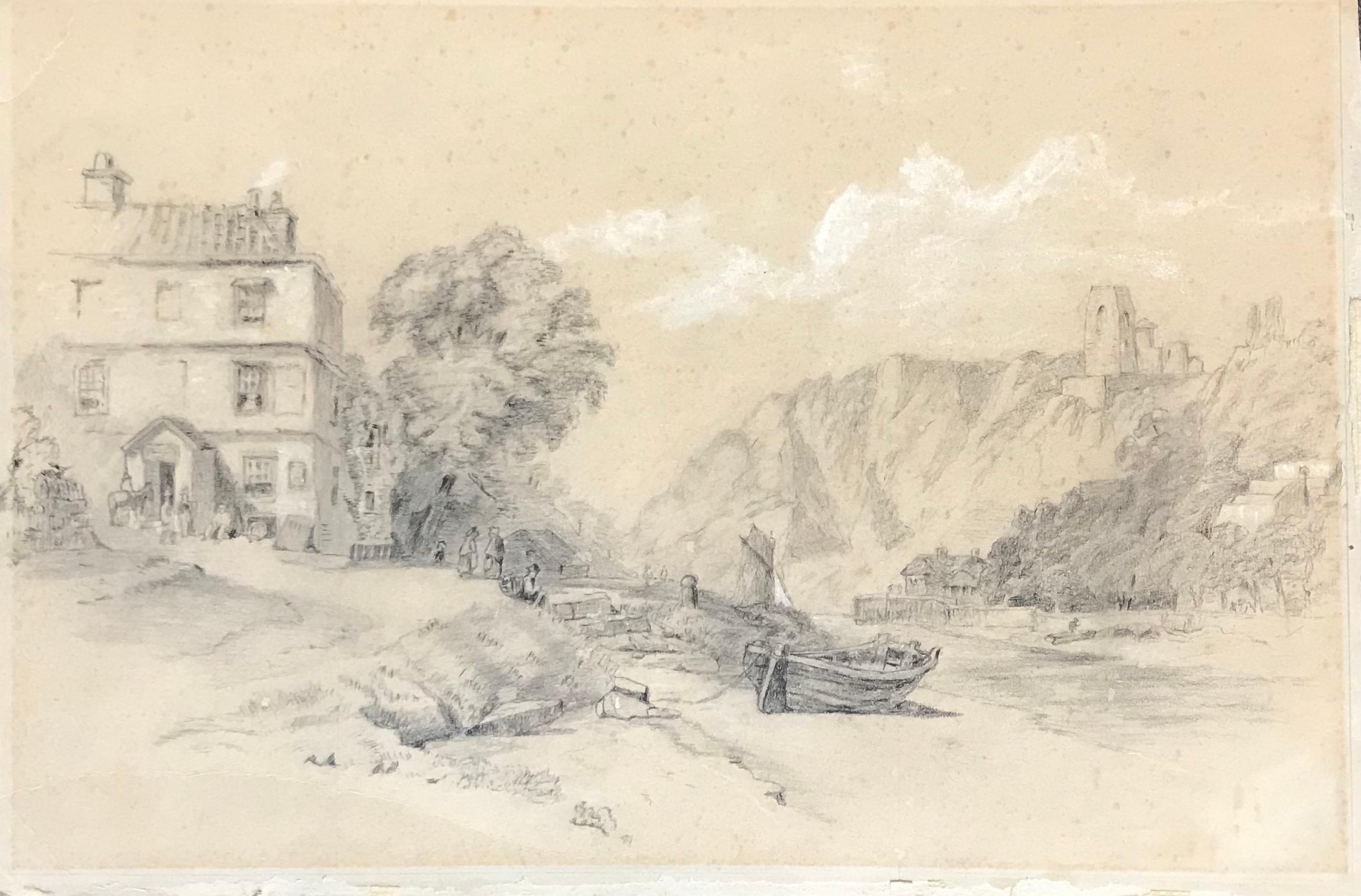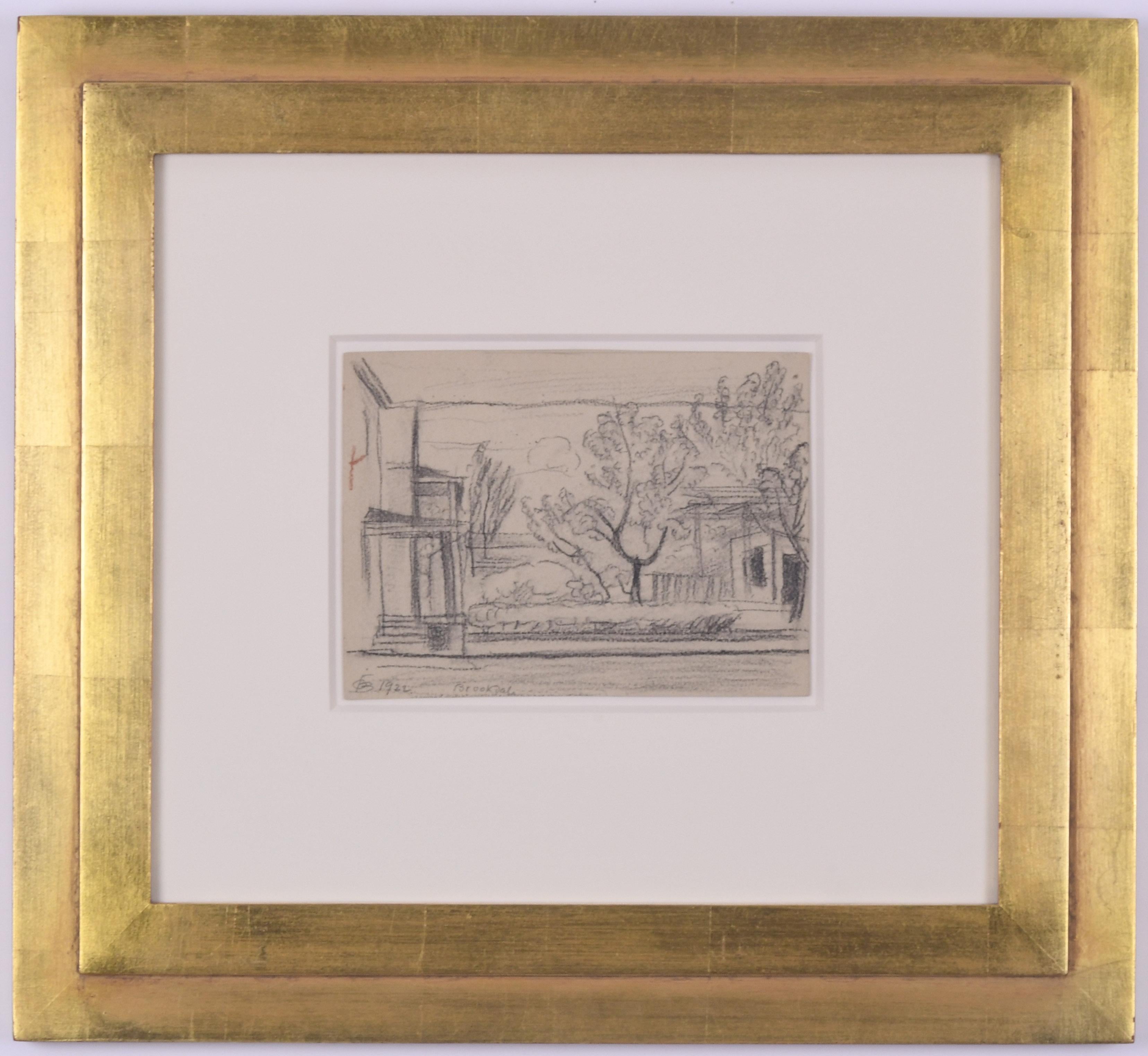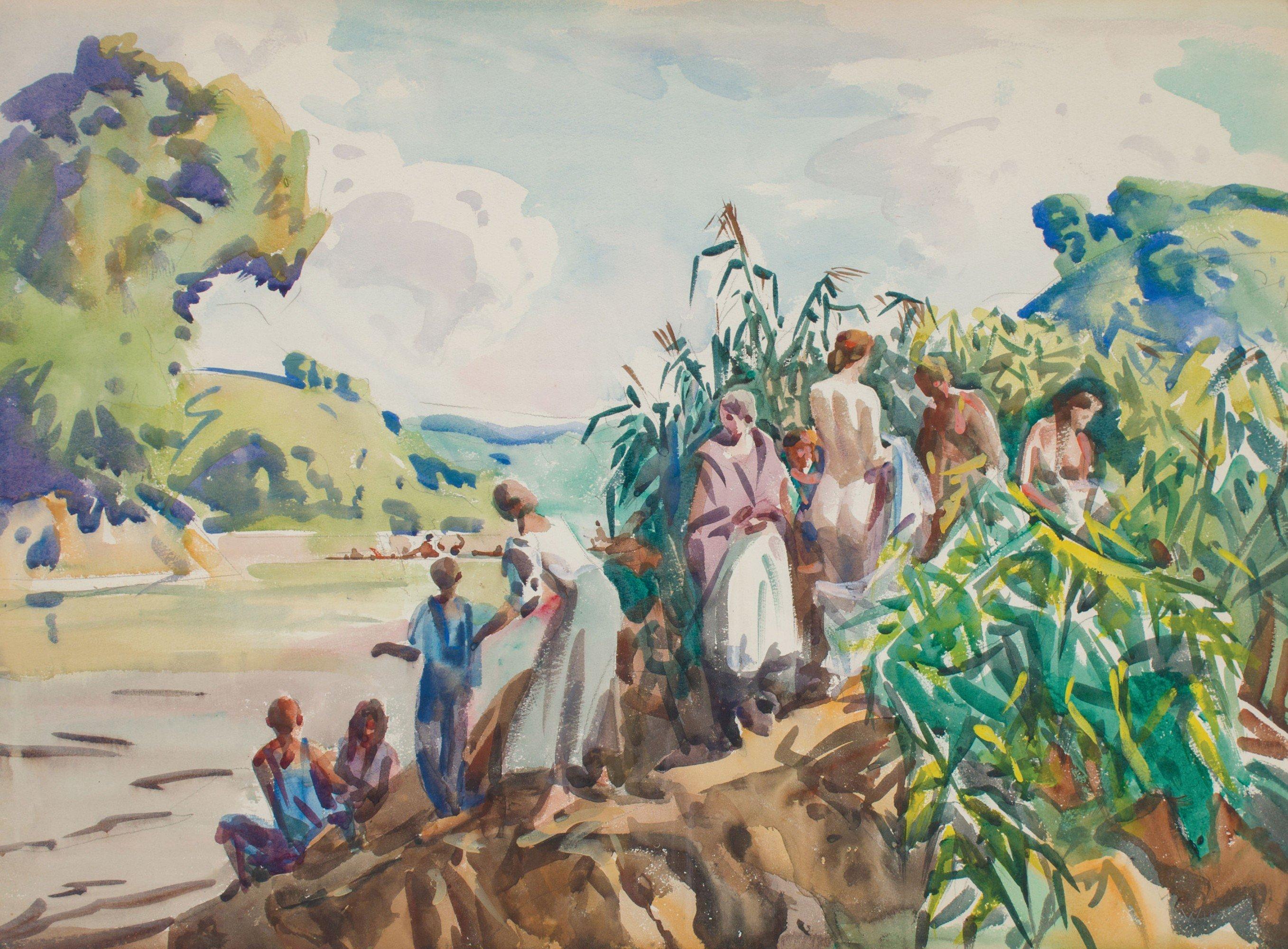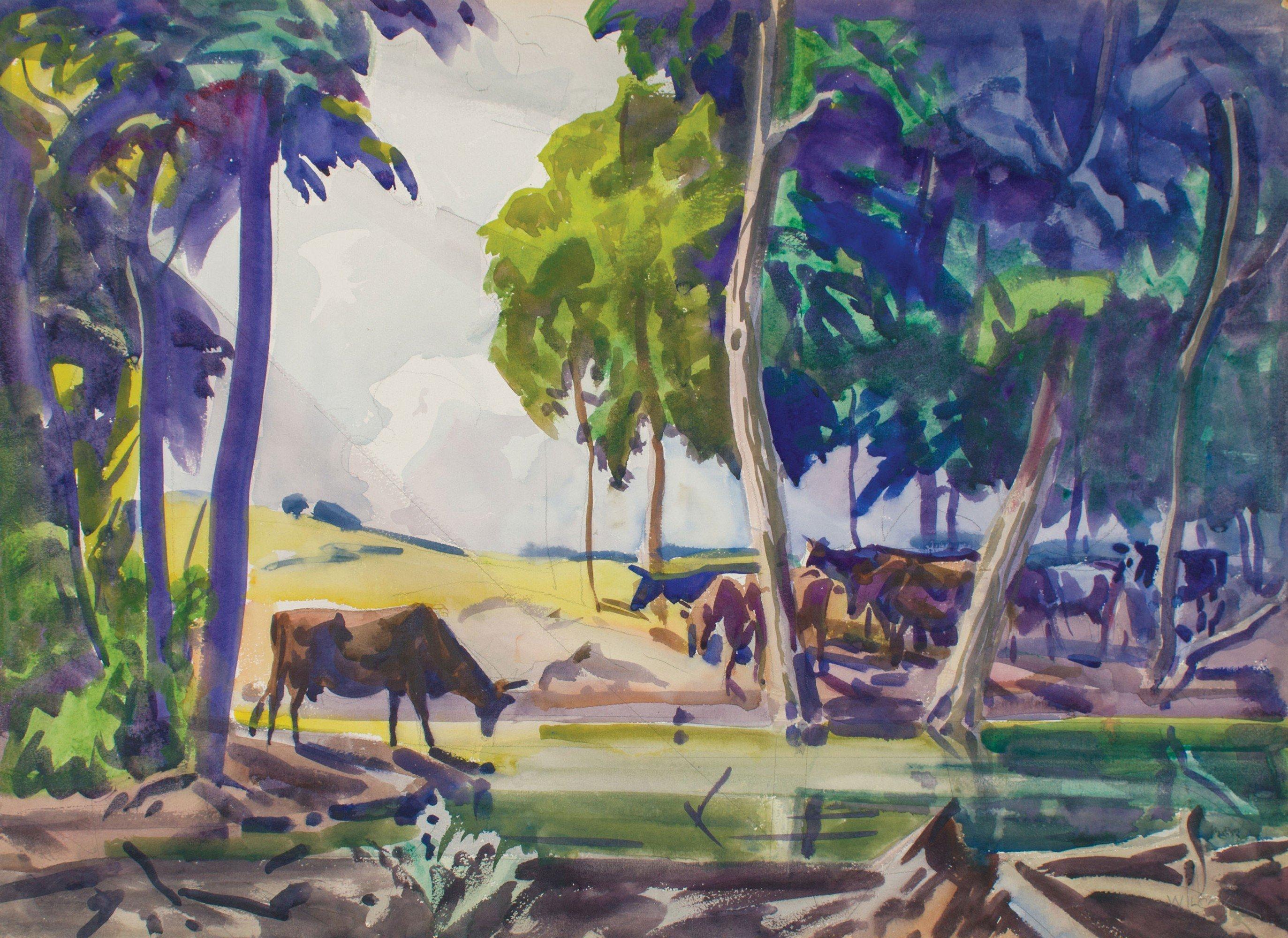Items Similar to Sword of the Lord
Want more images or videos?
Request additional images or videos from the seller
1 of 2
Stanley SpencerSword of the Lord1935
1935
About the Item
Stanley Spencer
Sword of the Lord
c.1935
Pencil on paper
17.8 x 25.4 cms (7 x 10 ins)
SS8308
- Creator:Stanley Spencer (1891 - 1959, British)
- Creation Year:1935
- Dimensions:Height: 7 in (17.78 cm)Width: 10 in (25.4 cm)
- Medium:
- Movement & Style:
- Period:
- Condition:
- Gallery Location:London, GB
- Reference Number:1stDibs: LU26226760162
About the Seller
4.8
Recognized Seller
These prestigious sellers are industry leaders and represent the highest echelon for item quality and design.
Established in 1960
1stDibs seller since 2015
103 sales on 1stDibs
Typical response time: Several days
Associations
International Fine Print Dealers AssociationSociety Of London Art Dealers
- ShippingRetrieving quote...Ships From: London, United Kingdom
- Return PolicyA return for this item may be initiated within 7 days of delivery.
More From This SellerView All
- Le SentierBy Paul CézanneLocated in London, GBPaul Cézanne Le Sentier ca. 1890 Watercolour and pencil on paper 34.6 x 51.5 cms (13 5/8 x 20 1/4 ins) PC16325Category
1890s Modern Landscape Drawings and Watercolors
MaterialsWatercolor, Pencil
- Le SentierBy Paul CézanneLocated in London, GBPaul Cézanne Le Sentier ca. 1890 Watercolour and pencil on paper 34.6 x 51.5 cms (13 5/8 x 20 1/4 ins) PC16325 Provenance: Walther Halvorsen, Oslo Galerie Bernheim-Jeune, Paris Ju...Category
19th Century Post-Impressionist Landscape Drawings and Watercolors
MaterialsWatercolor, Pencil
- Reclining FiguresBy Henry MooreLocated in London, GBHenry Moore Reclining Figures 1940 Chalk, pen and watercolour on paper 25.4 x 43.2 cms (10 x 17 ins) HM15852 Provenance: Willard Gallery, New York Private Collection, New York, ac...Category
1940s Modern Figurative Drawings and Watercolors
MaterialsColor Pencil, Watercolor
- Premonition Open, with Flesh over GreyBy Robert MotherwellLocated in London, GBPremonition Open, with Flesh over Grey, 1974, belongs to an extended series of works that came to be called the Opens and which came about by a happy accident. Leaning a finished can...Category
1970s Abstract Expressionist Abstract Paintings
MaterialsCharcoal, Acrylic Polymer, Graphite
- UntitledBy Robert MotherwellLocated in London, GBRobert Motherwell (1915-1991) Untitled 1990 Acrylic and coloured pencil on panel 40.6 x 50.8 cms (16 x 20 ins) RM13143 P1195 The composition of this painting is based on the left ...Category
1990s Abstract Expressionist Abstract Paintings
MaterialsAcrylic, Panel, Color Pencil
- Elegy to the Spanish Republic No. 110CBy Robert MotherwellLocated in London, GBRobert Motherwell Elegy to the Spanish Republic No. 110C 1968 Acrylic and graphite on paper 15.2 x 20.3 cms (6 x 8 ins) Robert Motherwell's Elegies series represent one of the iconic motifs of Abstract Expressionism. Based on a 1948 ink illustration the artist executed accompanying a Harold Rosenberg poem, “A Bird for every bird,” the drawing shows the hypnotically repetitive patterning of ovoids and vertical beams. The stark contrast of the black ink on white paper references the symbolic use of the color black by artists such as Goya, Manet and Matisse to convey death, loss, and tragedy. Motherwell was quite affected by the turbulence of the Spanish Civil War and alludes to the Spanish republic in his Elegies. Motherwell’s plumbing the depths of poetry, history, and primordial art in the Elegies is considered a hallmark of nascent Abstract Expressionist painting in its desire to "excavate" essential imagery of mankind. Motherwell, who originally trained as a philosophy scholar and later became of the great editors of 20th century art documents, grasped very early on the crucial importance that in order to contribute meaningfully to the canon of modern art, one must create a principle of aesthetics. Through the surrealist concept of automatism, the artist finally found the creative principle that eventually governed his extraordinary artistic output and produced the Elegies, one of the most salient, immediate painterly images of 20th century abstract painting. In fact, he has alluded to the fact that each one of his Elegies begins as an automatic drawing, and certain shapes are then blocked to create the signature armature of the vertical bars and ovals. The Elegies seem to possess the power of an archetypal image, an image the mind already grasps on a subconscious level. Motherwell's play of dualities of black and white as well as other dichotomies—the geometric versus the organic, chaos versus order, death versus life—was a condition of living through a tumultuous period in American history. During an interview, he vividly recalled the 1940s as the time when society was ordered by a set of contradictions. In Motherwell's Elegies, he not only discovered an incredibly elastic pictorial language that would communicate on multiple levels but also acknowledged these contradictions in a manner that would resonate in abstract form. The present work served as a model for a painting, Spanish Elegy...Category
1960s Abstract Expressionist Abstract Paintings
MaterialsAcrylic, Laid Paper, Graphite
You May Also Like
- Landscape - Drawing on paper 26x39 cmLocated in Geneva, CHWork on cardboardCategory
Early 20th Century Modern Landscape Drawings and Watercolors
MaterialsCrayon, Pastel, Carbon Pencil
- Swallows by the water. 1976, paper, pencil, 45. 5 x 40. 5 cmLocated in Riga, LVSwallows by the water. 1976, paper, pencil, 45. 5 x 40. 5 cm Dzidra Ezergaile (1926-2013) Born in Riga. School years alternate with summer work in the countryside. In 1947, she bega...Category
1970s Modern Abstract Drawings and Watercolors
MaterialsPaper, Pencil
- Brookdale, New JerseyBy Oscar Florianus BluemnerLocated in Fairlawn, OHBrookdale, New Jersey Graphite on paper, 1922 Signed with the artist's initials l.l., and dated 1922 (see photo) Annotated "Brookdale" front and back of she...Category
1920s American Modern Landscape Drawings and Watercolors
MaterialsGraphite
- “New England Homestead”Located in Southampton, NYVery well executed watercolor on archival paper of a New England homestead nestled in a picturesque valley. Early fall with the tress just starting to change colors. The watercolor was done by the American artist Hilton Leech...Category
1950s Modern Landscape Drawings and Watercolors
MaterialsWatercolor, Archival Paper, Graphite
- Women's Corner, Along the Cuyahoga River, Early 20th Century Cleveland SchoolBy Frank WilcoxLocated in Beachwood, OHFrank Nelson Wilcox (American, 1887-1964) Women's Corner, Along the Cuyahoga River, c. 1916 Watercolor and graphite on paper 21 x 29 inches Frank Nelson Wilcox (October 3, 1887 – April 17, 1964) was a modernist American artist and a master of watercolor. Wilcox is described as the "Dean of Cleveland School painters," though some sources give this appellation to Henry Keller or Frederick Gottwald. Wilcox was born on October 3, 1887 to Frank Nelson Wilcox, Sr. and Jessie Fremont Snow Wilcox at 61 Linwood Street in Cleveland, Ohio. His father, a prominent lawyer, died at home in 1904 shortly before Wilcox' 17th birthday. His brother, lawyer and publisher Owen N. Wilcox, was president of the Gates Legal Publishing Company or The Gates Press. His sister Ruth Wilcox was a respected librarian. In 1906 Wilcox enrolled from the Cleveland School of Art under the tutelage of Henry Keller, Louis Rorimer, and Frederick Gottwald. He also attended Keller's Berlin Heights summer school from 1909. After graduating in 1910, Wilcox traveled and studied in Europe, sometimes dropping by Académie Colarossi in the evening to sketch the model or the other students at their easels, where he was influenced by French impressionism. Wilcox was influenced by Keller's innovative watercolor techniques, and from 1910 to 1916 they experimented together with impressionism and post-impressionism. Wilcox soon developed his own signature style in the American Scene or Regionalist tradition of the early 20th century. He joined the Cleveland School of Art faculty in 1913. Among his students were Lawrence Edwin Blazey, Carl Gaertner, Paul Travis, and Charles E. Burchfield. Around this time Wilcox became associated with Cowan Pottery. In 1916 Wilcox married fellow artist Florence Bard, and they spent most of their honeymoon painting in Berlin Heights with Keller. They had one daughter, Mary. In 1918 he joined the Cleveland Society of Artists, a conservative counter to the Bohemian Kokoon Arts Club, and would later serve as its president. He also began teaching night school at the John Huntington Polytechnic Institute at this time, and taught briefly at Baldwin-Wallace College. Wilcox wrote and illustrated Ohio Indian Trails in 1933, which was favorably reviewed by the New York Times in 1934. This book was edited and reprinted in 1970 by William A. McGill. McGill also edited and reprinted Wilcox' Canals of the Old Northwest in 1969. Wilcox also wrote, illustrated, and published Weather Wisdom in 1949, a limited edition (50 copies) of twenty-four serigraphs (silk screen prints) accompanied by commentary "based upon familiar weather observations commonly made by people living in the country." Wilcox displayed over 250 works at Cleveland's annual May Show. He received numerous awards, including the Penton Medal for as The Omnibus, Paris (1920), Fish Tug on Lake Erie (1921), Blacksmith Shop (1922), and The Gravel Pit (1922). Other paintings include The Trailing Fog (1929), Under the Big Top (1930), and Ohio Landscape...Category
1910s American Modern Figurative Drawings and Watercolors
MaterialsGraphite, Watercolor
- Cows by Woodland Pond, Toledo, Ohio, Early 20th Century Cleveland SchoolBy Frank WilcoxLocated in Beachwood, OHFrank Nelson Wilcox (American, 1887-1964) Cows by Woodland Pond, Toledo, Ohio, c. 1920 Watercolor and graphite on board Signed lower right 22 x 30 inches Frank Nelson Wilcox (October 3, 1887 – April 17, 1964) was a modernist American artist and a master of watercolor. Wilcox is described as the "Dean of Cleveland School painters," though some sources give this appellation to Henry Keller or Frederick Gottwald. Wilcox was born on October 3, 1887 to Frank Nelson Wilcox, Sr. and Jessie Fremont Snow Wilcox at 61 Linwood Street in Cleveland, Ohio. His father, a prominent lawyer, died at home in 1904 shortly before Wilcox' 17th birthday. His brother, lawyer and publisher Owen N. Wilcox, was president of the Gates Legal Publishing Company or The Gates Press. His sister Ruth Wilcox was a respected librarian. In 1906 Wilcox enrolled from the Cleveland School of Art under the tutelage of Henry Keller, Louis Rorimer, and Frederick Gottwald. He also attended Keller's Berlin Heights summer school from 1909. After graduating in 1910, Wilcox traveled and studied in Europe, sometimes dropping by Académie Colarossi in the evening to sketch the model or the other students at their easels, where he was influenced by French impressionism. Wilcox was influenced by Keller's innovative watercolor techniques, and from 1910 to 1916 they experimented together with impressionism and post-impressionism. Wilcox soon developed his own signature style in the American Scene or Regionalist tradition of the early 20th century. He joined the Cleveland School of Art faculty in 1913. Among his students were Lawrence Edwin Blazey, Carl Gaertner, Paul Travis, and Charles E. Burchfield. Around this time Wilcox became associated with Cowan Pottery. In 1916 Wilcox married fellow artist Florence Bard, and they spent most of their honeymoon painting in Berlin Heights with Keller. They had one daughter, Mary. In 1918 he joined the Cleveland Society of Artists, a conservative counter to the Bohemian Kokoon Arts Club, and would later serve as its president. He also began teaching night school at the John Huntington Polytechnic Institute at this time, and taught briefly at Baldwin-Wallace College. Wilcox wrote and illustrated Ohio Indian Trails in 1933, which was favorably reviewed by the New York Times in 1934. This book was edited and reprinted in 1970 by William A. McGill. McGill also edited and reprinted Wilcox' Canals of the Old Northwest in 1969. Wilcox also wrote, illustrated, and published Weather Wisdom in 1949, a limited edition (50 copies) of twenty-four serigraphs (silk screen prints) accompanied by commentary "based upon familiar weather observations commonly made by people living in the country." Wilcox displayed over 250 works at Cleveland's annual May Show. He received numerous awards, including the Penton Medal for as The Omnibus, Paris (1920), Fish Tug on Lake Erie (1921), Blacksmith Shop (1922), and The Gravel Pit (1922). Other paintings include The Trailing Fog (1929), Under the Big Top (1930), and Ohio Landscape...Category
1920s American Modern Figurative Drawings and Watercolors
MaterialsWatercolor, Graphite




